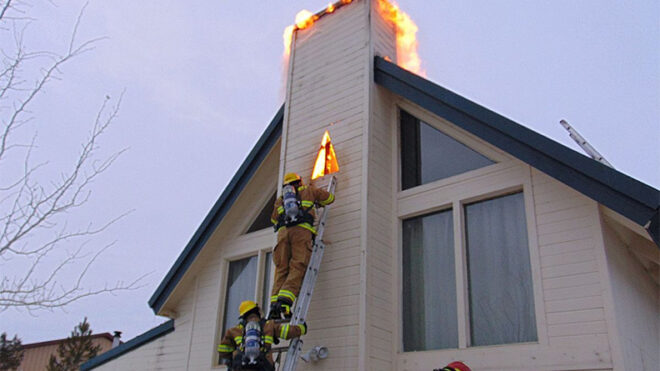Expert Secrets: Just How Chimney Sweep San Jose Can Extend Your Chimney's Life expectancy
Expert Secrets: Just How Chimney Sweep San Jose Can Extend Your Chimney's Life expectancy
Blog Article
Specialist Guide to Chimney Cleaning: Everything You Need to Know
In the world of house maintenance, the smokeshaft commonly rests unnoticed until it comes to be a pushing issue. Ignoring chimney cleaning can lead to a host of issues, from poor ventilation to safety risks. Comprehending the ins and outs of appropriate chimney maintenance is vital for any house owner. From the tools called for to the detailed process included, a professional overview to smokeshaft cleansing provides a detailed introduction of exactly how to keep this important part of your home working efficiently. But it's not simply about cleanliness - security preventative measures and upkeep tips play a considerable role in guaranteeing the longevity and effectiveness of your smokeshaft.
Importance of Smokeshaft Maintenance
Keeping appropriate smokeshaft maintenance is essential for making sure the safety and security and performance of your home's heating system. Over time, smokeshafts can collect creosote, a very combustible substance that can lead to smokeshaft fires if not cleaned on a regular basis.
Routine chimney maintenance additionally aids in preventing obstructions that can obstruct the circulation of air and gases, causing inadequate ventilation and decreased heating effectiveness. In addition, a tidy smokeshaft avoids the buildup of debris and nesting materials from pets and birds, reducing the risk of blockages and ensuring proper airflow.
Tools and Supplies Needed

Step-by-Step Cleansing Refine

The initial step is to prepare the location around the fireplace by laying down protective sheets to stop any type of soot or debris from soiling your home. Next off, open up the damper to guarantee appropriate ventilation throughout the cleansing process.
Making use of a flashlight, check the smokeshaft for any blockages or accumulation. Remove any type of visible particles such as nests, leaves, or creosote using a chimney brush or vacuum cleaner specifically developed for smokeshaft cleansing.
After getting rid of the debris, it's time to scrub the chimney walls. Affix the brush to extension poles and scrub the wall surfaces completely to displace any type of stubborn accumulation. Follow up by vacuuming or brushing up the loosened up debris.
When the chimney is clean, examine the chimney cap and flue for any damage or indications of wear. Close the damper and clean up up the bordering location before evaluating the fireplace to make sure proper airflow.
Security Preventative Measures to Comply With
Ensure that the fireplace and smokeshaft are completely amazing before starting any kind of cleaning click for info activities to stop fires or burns. Take into consideration employing a specialist chimney move for elaborate or risky cleaning tasks to ensure the task is done securely and effectively. By following these security preventative measures, you can minimize risks and preserve a safe environment during the chimney cleaning procedure.
Tips for Preserving a Clean Chimney
Before starting the chimney cleansing procedure, it is vital to incorporate routine upkeep techniques to ensure a well-functioning and tidy chimney. One suggestion for maintaining a tidy chimney is to schedule normal evaluations by a licensed smokeshaft move. These assessments can help identify any type of possible problems before they intensify, conserving you money and time in the lengthy run. In addition, melting the ideal type of wood, such as seasoned hardwoods, can help in reducing the accumulation of creosote in the smokeshaft. Creosote click for source is an extremely flammable substance that can lead to chimney fires if not appropriately handled. One more vital suggestion is to mount a chimney cap to stop debris, animals, and wetness from going into the smokeshaft. Routinely cleaning the chimney and checking cap can ensure it operates properly. Constantly dispose of ashes correctly and without delay after each usage to prevent the accumulation of ash, which can restrict air flow and raise the danger of smokeshaft fires. By adhering to these upkeep pointers, you can delight in a secure and tidy smokeshaft throughout the year.
Final Thought
In final thought, regular smokeshaft cleansing is important for preserving a reliable and risk-free fireplace or home heating system. By complying with the step-by-step cleaning procedure and taking essential safety and security preventative measures, you can ensure that your smokeshaft works properly and reduces the risk of fire hazards.
Over time, smokeshafts can accumulate creosote, a very combustible substance that can lead to chimney fires if not cleaned up frequently. The primary tools needed for smokeshaft cleaning consist of a smokeshaft brush, chimney rods, a vacuum cleaner, safety equipment such as safety glasses and gloves, a flashlight, and a tough ladder. The chimney brush is crucial for eliminating creosote accumulation, while the chimney rods help in extending the reach of the brush to cleanse the entire smokeshaft length - right here Chimney Sweep San Jose. By having these supplies and tools ready, you can embark on chimney cleaning effectively and safely, keeping the proper functioning of your smokeshaft and ensuring a secure environment in your home
Prior to starting the smokeshaft cleansing procedure, it is essential to include regular maintenance techniques to ensure a tidy and well-functioning smokeshaft.
Report this page